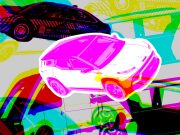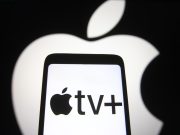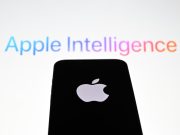In today’s digital marketing landscape, visual content reigns supreme. The emergence of AI image generators has revolutionized how marketers design and use visual assets across marketing efforts.
How AI Image Technology is Revolutionizing Marketing
AI image generators are cutting-edge applications that use machine learning algorithms to create custom graphics based on written prompts. These tools process existing visual content to recognize styles and then create new images that satisfy specified requirements.
For marketers, these tools represent a fundamental transformation in visual content creation, offering perks that traditional methods are unable to deliver:
Production Velocity: AI can produce dozens of high-quality images in a fraction of the time, greatly enhancing the content creation process.
Budget Efficiency: By lowering or cutting out the need for professional photographers, graphic designers, or expensive stock photo subscriptions, AI image generators drastically cut the cost barrier to quality visual content.
Personalization: These tools can create precisely designed visuals tailored to particular marketing campaigns, audience segments, or brand aesthetics.
Key Uses of AI Image Generators in Digital Marketing
Social Media Marketing
Social media platforms are inherently visual environments where the right image can capture attention. AI image generators enable marketers to:
Produce platform-specific visuals optimized for each social network’s unique audience
Quickly react to trends and current events with relevant visuals
Keep up consistent posting schedules with fresh, engaging content
Generate custom graphics that strengthen brand identity across channels
Email Campaign Strategies
Email remains one of the most effective marketing channels, and AI-generated images can significantly boost campaign performance:
Tailored visuals created for specific subscriber segments
Unique graphics that strengthen email messaging
Comparative analysis of different visual approaches
Interactive elements that adjusts based on recipient behavior
Digital Ad Strategies
AI-generated images have proven exceptionally valuable for digital advertising:
Generation of multiple ad variations to analyze messaging
Rapid production of ad creative for different platforms
Custom visuals that align perfectly with ad copy
Adjustable development of assets for large campaigns
Product Visualization and E-commerce
For e-commerce marketers, AI image generators offer innovative capabilities:
Production of product mockups without physical photography
Generation of lifestyle images showing products in contextual settings
Depiction of products in different colors, styles, or environments
Production of visually compelling product listings at scale
Benefits That Enhance Marketing Operations
Imaginative Potential and Experimentation
AI image generators enable marketers to experiment with visual concepts that might be impractical to create through traditional means. This broadened creative palette allows for:
Trying innovative visual approaches without significant resource investment
Fast visualization of concepts before committing to full production
Research of distinctive visual styles that set apart a brand
Harmony Across Campaigns
Upholding visual consistency is critical for building brand recognition. AI tools excel at creating images that match specific style guidelines.
Flexibility for Growing Businesses
As marketing needs expand, AI image generators adjust effortlessly to meet demand:
No constraints on production capacity
Uniform quality regardless of volume
Capability to customize thousands of visuals for different segments or campaigns
Adoption Approaches for Marketers
Merging AI Images with Marketing Platforms
Major marketing platforms increasingly offer native AI image generation capabilities. For example, many advertising platforms provide native image generators that allow advertisers to:
Identify products to promote
Develop enhanced product images automatically
Refine results using prompts and themes
Preserve custom images to a creative asset library for future use
Improving Content Marketing Efforts
Content marketers can employ AI-generated images to:
Create custom illustrations for blog posts and articles
Generate infographics that transform complex data into visually appealing formats
Produce featured images that increase engagement with written content
Generate consistent visual assets across content marketing initiatives
Challenges and Limitations to Consider
Despite their innovative power, AI image generators present several problems marketers should address:
Quality Inconsistencies
AI-generated images can sometimes include odd features, anatomical impossibilities, or other imperfections. The most common issues include:
Unusual human features, particularly hands and faces
Typography that appear nonsensical
Perspective errors
Difficulties with complex or overlapping elements
Moral and Legal Considerations
Several important compliance and principled issues surround AI-generated imagery:
Rights confusion, as AI systems train on existing images
Questions about ownership of AI-generated content
Possibility for inadvertent imitation of copyrighted visual styles
Absence of clear legal precedent regarding AI-generated assets
Without the Human Touch
While increasingly sophisticated, AI-generated images may sometimes miss the emotional depth and nuanced understanding that human designers bring to visual creation.
Best Practices for Marketing Success
To maximize the effectiveness of AI image generators in marketing:
Use clear, detailed prompts that indicate style, mood, context, and other important elements
Adhere to brand guidelines and ensure all AI-generated content meets them
Mix AI generation with human oversight and editing when needed
Run regular testing to determine which AI-generated styles perform best
Stay informed about evolving copyright and legal considerations
The Horizon of AI Image Generation in Marketing
As AI image generation technology continues to evolve, we can expect:
Improved photorealism and higher quality outputs
Enhanced integration with marketing automation platforms
Refined personalization capabilities
Upgraded video generation capabilities building on still image technology
Greater clarity around legal and ethical frameworks
Conclusion
AI image generators signify a revolutionary development for internet marketers, offering extraordinary efficiency, creativity, and scalability in visual content creation. While limitations exist regarding quality consistency and legal considerations, the competitive edge these tools provide will make them more important to effective marketing strategies.
By thoughtfully incorporating AI-generated imagery into marketing workflows, businesses can create more compelling, personalized visual experiences that boost engagement and conversions while substantially lowering production time and costs. As the technology keeps evolving, marketers who master these tools will gain considerable competitive advantages in the visual-first digital landscape.
Source: Seznam Marketing

















